
Visit Shrines
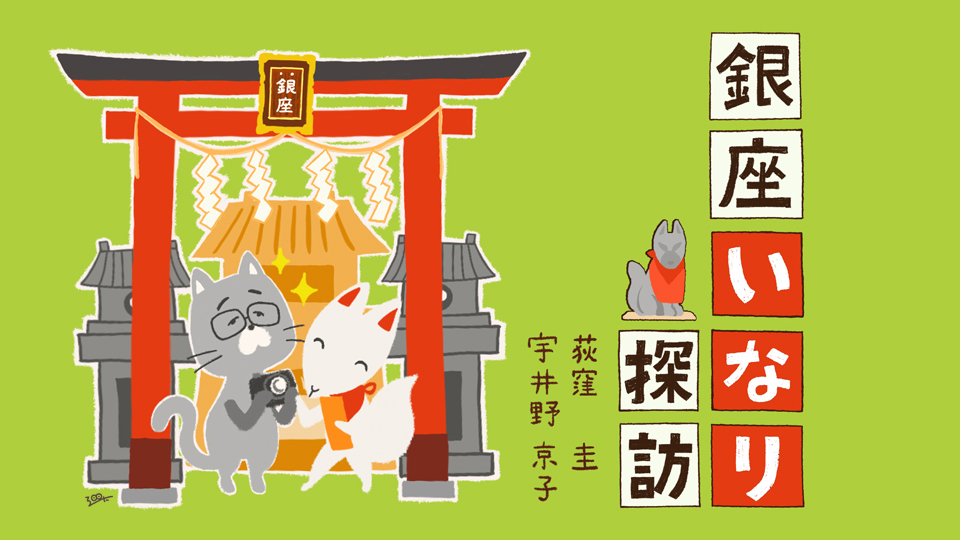
Visit Ginza’s Shrines Vol.13 Hachikan Shrine
2023.02.01
Many stories are told in Ginza, where stories can begin and end. So, what story does today’s Inari shrine have to tell?
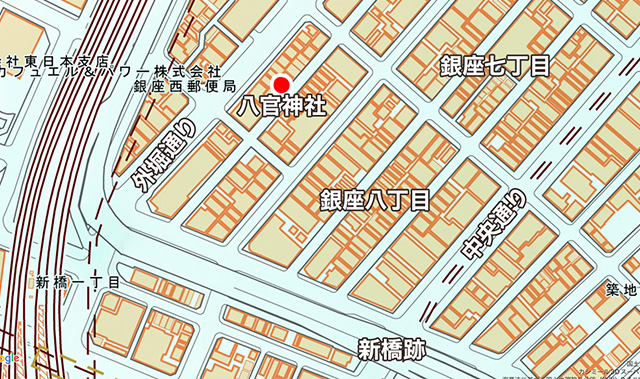
- Ogikubo
- So, this time we are visiting Ginza 8-chome. It is a very different neighborhood from the area spreading across Ginza 2-chome to Ginza 4-chome.
- Uino
- People often say that that 4-chome is Ginza in the daytime, and 8-chome wakes up at night. This area is very quiet during the day and bright at night. Passing by, I had always noticed that there was a small shrine. Gorgeously dressed girls with beautifully arranged hair often come to pray here at Hachikan Shrine.
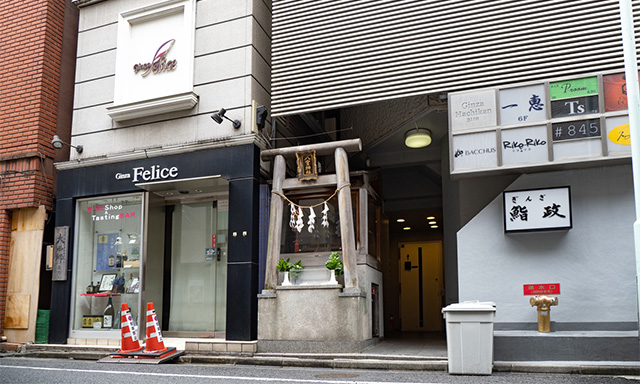
- Ogikubo
- Does the name Hachikan Shrine have anything to do with the fact that it is located in Ginza 8-chome?
- Uino
- This area used to be called Hachikan-cho. I wonder what Hachikan stands for.
- Ogikubo
- You would think that ”Hachikan” stood for the title of a government position or a group of eight government officials. However, according to my research, back in the early Edo period, land was given to a Dutch named Hachikuwan.
- Uino
- Who in the world is Hachikuwan?
- Ogikubo
- It almost sounds fictionary, but it could very well be true that the area was named after a person. William Adams was called Miura Anjin and the area where he lived camed to be called Anjin-cho. Jan Joosten’s Japanese name was Yayousu now we know the area by the name Yaesu.
- Uino
- Place names with a story are fascinating. Now coming back to Hachikan Shrine, its deity is an Inari god. It was originally built in the Genroku period (1688-1704).
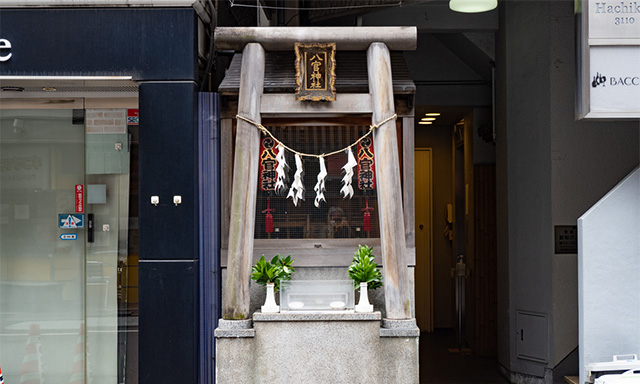
- Ogikubo
- Let us look for Hachikan Shrine in the Edo period. Small shrines are often not marked in Edo maps… but here it is. It can be found in an Edo Kiriezu from the late Edo period.
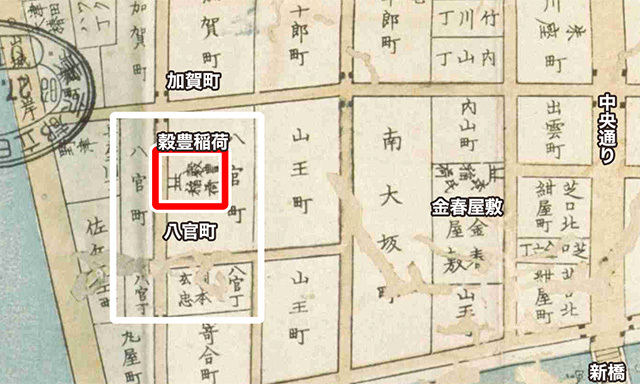
(adapted from ”Kyōbashiminami shibaguchibashi tsukiji teppōzuhen ezu” (Tokyo Metropolitan Central Library collection))
- Ogikubo
- ”Kokuho Inari” is located in the center of Hachikan-cho. It is in the exact same place as today. But it was called Kokuho Inari back then.
- Uino
- Yes, it is an Inari shrine, but people decided to rename it Hachikan Shrine after Hachikan-cho. It also enshrines a princess.
- Ogikubo
- A princess?
- Uino
- The story goes that the Kagahime Inari was brought here by Heishiro Tanaka, a Nanushi (village administrator) from the late Edo or early Meiji period. The Kagahime Goddess had been worshiped for generations by his family. Hachikan-cho was home to many Geisha. I guess the girls who come to worship here are praying to Kagahime-sama.
- Ogikubo
- When you look at the Edo-ezu, Kaga-cho lies next to Hachikan-cho. Perhaps, the Kagahime Inari originally sat there. When the Edo city area was being developed, Kaga-cho was built by workers from Kaga-no-kuni (currently, Ishikawa Prefecture). Therefore, Kagahime Inari must have been brought from Kaga-no-kuni as well.
It is amazing that we can find Kokuho Inari Shrine on a map from the Edo period, sitting in the same place, just along Sotobori Dori. It has now been moved to the street in the back but it has remained in almost the same place in Ginza, where landowners change from time to time and new buildings are constantly being built. - Uino
- What’s more, up until around twenty years ago, it faced Sotobori-dori and could be visited from the main street. And it was in the same building that is home to Hachikan Shrine today.
- Ogikubo
- Wow. That means it was facing the main street until the middle of the Heisei period. That is not so different from where it was located during the Edo period.
- Uino
- Let us take a stroll around. And let us find the same building on the other side. That must be it. The first floor has a two-story ceiling and that is where the shrine used to sit.
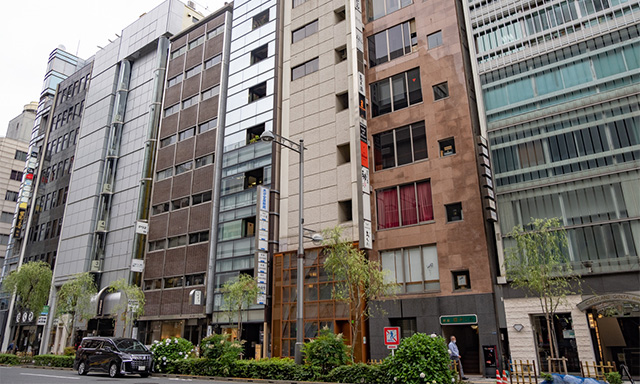
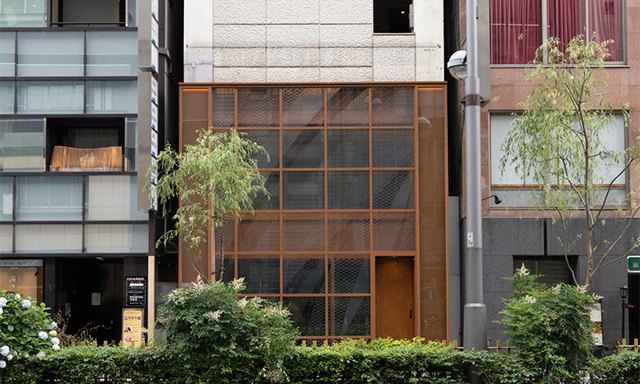
- Ogikubo
- Now that you have pointed it out, I can see that store has a first floor with a two-story ceiling. It’s fascinating to imagine that an entire shrine fit in the building. I am so familiar with Ginza that I am really surprised to know that there was shrine facing Sotobori-dori. Why was it moved to the back?
- Uino
- It was another case of redevelopment as we have heard so many times before in this series. The shrine originally had a resident Shinto priest, but when the building owner changed, the shrine lost its resident priest. Then it was moved to the backside of the building and the space facing the main street became a shop for rent.
- Ogikubo
- It is a pity. But it is because they preserved the shrine that we can trace its history. We should be thankful for that.
- Uino
- When it had a resident priest, the shrine’s office was located on the 8th floor but there was no longer anyone to take care of the shrine. Later, when the building had a new owner, he had the deity moved to an appropriate shrine and built a small branch shrine here.
- Ogikubo
- Where to was the deity moved?
- Uino
- To the well-known Shiba Dai-jingu. There, you can find a glamorous miniature shrine enshrining Hime Inari. Every June, there is a Grand Festival celebrating it.
- Ogikubo
- That is the large shrine close to Zojoji Temple. Although it looks very modern today, it is an ancient shrine built in the Heian period. Called Shinmeigu in the Edo period, it was a very busy shrine as it sold Tomikuji lottery.
- Uino
- Many people visit Hachikan Shrine to pray for good luck with the Takarakuji lottery. I guess that is where this superstition comes from.
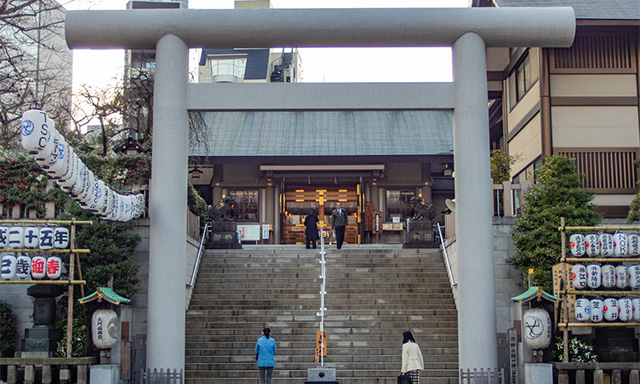
- Ogikubo
- I would have liked to visit it when it was still facing the main street. Anyway, I am very impressed that Houkoku Inari and Kagahime-sama have both managed to creatively survive in Ginza 8-chome, where there is so much competition for land. I truly respect the building owner who has maintained the shrine. If it had not been maintained, we would not have the opportunity to reflect on the local history
- Uino
- I felt some drama in Hachikan Shrine’s story of managing to stay in the area by moving around. I wish someone would write a novel about Ginza’s Inari shrines.
All List
- 2020.05.01 Visit Ginza’s Inari Shrines Vol.2 Asahi Inari Shrine
- 2020.08.01 Vol.3 Exploring Ginza in the Edo Period on an old map
- 2020.11.01 Visit Ginza’s Inari Shrines Vol. 4 Kakugo Inari Shrine
- 2021.02.01 Visit Ginza’s Inari Shrines Vol. 5 Azuma Inari
- 2021.05.01 Visit Ginza’s Inari Shrines Vol.6 Kabuki Inari
- 2021.08.01 Visit Ginza’s Inari Shrines Vol.7 Ginza Inari in Ginza 2-chome
- 2021.11.01 Visiting Ginza’s Shrines Vol. 8 Kumagai Inari Shrine
- 2022.02.01 Visit Ginza Shrines Vol. 9 Saiwai Inari Shrine
- 2022.05.01 Visit Ginza’s Shrine Vol. 10 Mimeguri Shrine and Shusse Jizoson on the roof of Mitsukoshi Department Store
- 2022.08.01 Visit Ginza’s Shrines Vol. 11 Komparu Inari
- 2022.11.01 Visit Ginza’s Inari Shrines Vol.12 Mankin Ryujin Seiko Inari Shrine
- 2023.02.01 Visit Ginza’s Shrines Vol.13 Hachikan Shrine
- 2023.05.01 Visit Ginza’s Inari Shrines Vol.14 Hoju Inari Shrine
- 2023.08.01 Visit Ginza’ Inari Shrines Vol. 15 Ryuko Fudo-son
- 2023.11.01 Visit Ginza’s Shrines Vol. 16 Hodo Inari Shrine
- 2024.02.01 Visit Ginza’s Shrines Vol. 17 Toyoiwa Inari Shrine
- 2024.05.01 Visit Ginza’s Inari Shrines Vol. 18 Yasuhira Shrine
- 2024.08.01 Visit Ginza’s Inari Shrines: Final Edition








